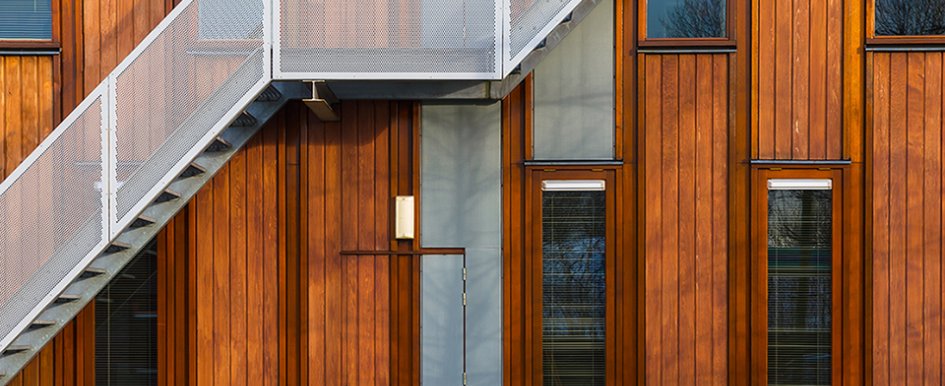
More often than not, construction companies are being urged to look to the future and consider changes to help environmental protection and sustainability.
According to the United States Energy Information Administration (EIA), buildings consume almost 40% of the total U.S. energy consumption and generate 30% of greenhouse gas emissions. In addition, building projects consume 50% of our resources from nature, often leading to added costs, delayed construction times and wasted materials.
To combat this drain on our resources, buildings are being designed to be more sustainable, ecofriendly and smarter. These “green buildings” follow strict resource-efficient models of construction and include specific features, such as sustainable materials, renewable resources, green roof systems, improved acoustics, clean indoor quality and biophilic spaces. The environmental and economic benefits are significant—around 25% less energy usage, and a 20% drop in maintenance costs.
But where does a contractor start in terms of helping climate change and offering a more ecofriendly service?
Luckily the cost of sustainable building materials and products is continuing to drop, making green building not only be cost-effective for construction, but also the best solution for solving our environmental and health issues.
Materials are being engineered to be smarter, stronger, sleeker and easier on the planet. For example, the BIQ House in Hamburg, Germany, provides a perfect glimpse of the future. Built with living algae, the BIQ can harness its own electricity. Not only do its aesthetics call to mind impressive sci-fi buildings from pop culture, but its impact on the environment holds much promise for a sustainable future.
To keep a competitive edge, construction companies need to stay up to date on these material innovations. Buildings crafted with the most modern materials will be more equipped to solve ongoing challenges, reduce their carbon footprint and make an impact in the industry.
While it can take decades for scientific breakthroughs to make their way to a jobsite, a new generation of materials is coming. Here are 18 materials that are currently making a buzz in construction and may very well change the way we build and do business.
- Self-healing concrete–Concrete with water activated bacteria that produces calcite to heal cracks and has an amazing 200-year lifespan. It reduces infrastructure maintenance and cuts greenhouse gases.
- 3D graphene–3D-printed carbon that is 5% of steel’s density, but 200 times its strength.
- Aerographite–Atom made material that grows stronger when compressed. It is 75 times lighter than Styrofoam.
- Laminated timber–Called the wood of the future, it has higher water resistance and strength than traditional wood with potential to support skyscrapers and reduce 150 tons of carbon per story.
- Modular bamboo–Super sturdy and ecofriendly, this low cost fast growing material is ideal for building earthquake resistant buildings and reinforcing steel bars.
- Transparent aluminum–Ceramic alloy that is 85% harder than sapphire and resistant to corrosion, radiation and oxidation.
- Translucent wood–90% transparent this color stripped wood has better insulation, strength and biodegradability, great for window glass replacement and natural indoor lighting.
- Light generating concrete–Nonflammable concrete embedded with miniscule glass balls to reflect light and reduce the need for electricity.
- Microbial cellulose–Produced by a mixture of bacteria, yeast and microorganisms, this material can be used for signage and contemporary building facades.
- Spider silk–Stronger than steel and 98% water, ideal for acoustic building tiles and labs.
- Aluminum foam–100% recyclable foam that is made by injecting air with molten metal and ideal for cladding.
- Nano crystal for smart windows–Reduces HVAC costs because it allows natural light to pass through while blocking heat.
- Wool brick–Fused with wool and seaweed polymer, offers 37% more strength than earth brick. Reduces greenhouse gases from firing traditional bricks.
- Pollution-absorbing brick–Able to filter 30% of fine pollutants and 100% of coarse pollutants. Releases filtered air and self-sustaining ventilation or green buildings.
- Hydroceramics–Brings futuristic self-cooling walls. A membrane made of ceramic fabric and hydrogels that can absorb up to 400 times its volume in water. Cools buildings and saves 28% in air conditioning electrical costs.
- Biochar–Waste product material with high insulation qualities, produced when tree debris is burned in pyrolysis kilns. Provides more sustainable and self-reliant buildings.
- Bioreactors–Algae-infused building panels that undergo synthesis to create energy. Provide thermal regulation to create more sustainable buildings.
- Invisible solar cells–Pushes no visible wavelengths of light to solar cells imbedded at the edges. Creates energy from any building component including windows and doors.
While many of these innovations are not yet in production on full-scale buildings, they may be making their way into your projects within the next decade. Until then, staying on top of trends will help you improve your bottom line and play your role in keeping our environment.
And don’t forget the impact green buildings can have on human beings. Research shows that green buildings play a role in boosting our indoor environments and, in turn, creating higher satisfaction, enhanced well-being and increased productivity for people. These psychological benefits improve our livelihoods, leading to happier and more profitable businesses on top of environmental action.
